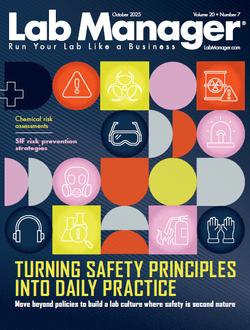Understanding Dopamine and Avoidance Learning
Dopamine is commonly referred to as the brain's reward molecule, associated with motivation, pleasure, and habit formation. However, new research challenges this narrow view by highlighting dopamine's crucial role in helping organisms avoid harmful or negative outcomes. This broader understanding has implications not only for neuroscience and behavior but also for the rising popularity of the "dopamine detox" trend—a wellness strategy that encourages abstaining from pleasurable stimuli to reset dopamine pathways.
In a groundbreaking study from Northwestern University published in Current Biology, scientists revealed how dopamine signals in different regions of the brain evolve over time to support learning from aversive experiences. This work offers valuable insights into psychiatric conditions like anxiety and OCD, while debunking oversimplified self-help concepts about dopamine regulation. The study's revelations bring us closer to understanding how adaptive—and maladaptive—avoidance behaviors are formed.
Dopamine: Not Just a Reward Signal
The Dual Role of Dopamine in Learning
Dopamine is widely recognized for reinforcing positive behaviors, but this study confirms it also helps the brain respond to cues associated with negative events. This dual role is essential for adapting to dynamic environments, where both rewards and threats must be navigated.
"Dopamine is not all good or all bad," said Gabriela Lopez, first author and doctoral candidate at Northwestern University Feinberg School of Medicine. "It rewards us for good things but also helps us tune into cues that signal trouble, learn from consequences and continuously adapt our learning strategies in unstable environments."
The Experiment: Mapping Dopamine Signals in the Brain
Study Design and Methodology
To understand how dopamine influences avoidance learning, researchers used a behavioral task involving mice in a two-chamber box:
- A five-second warning cue was given before an unpleasant outcome.
- Mice could avoid the outcome by moving to the other chamber during the cue.
- Dopamine activity was monitored in two key regions of the nucleus accumbens: the ventromedial shell and the core.
Tools and Techniques Used
- Fiber photometry: Real-time recordings of dopamine activity
- Behavioral training: Progressive learning stages tracked from novice to expert
- Controlled environments: Introduced unavoidable outcomes to evaluate the flexibility of brain signals
Key Findings from the Study
The two brain regions showed contrasting patterns of dopamine activity:
| Brain Region | Dopamine Response | Learning Phase | Key Insight |
|---|---|---|---|
| Ventromedial Shell | Increase (initially in response to negative event) → shifts to cue → fades | Early to Mid | Crucial for forming initial associations |
| Core of Nucleus Accumbens | Decrease (in both event and cue) | Mid to Late | Supports refined learning and continued avoidance behavior |
"These responses are not only different in their sign -- where in one area, dopamine goes up for something bad and, in the other area, it goes down for something bad -- but we also saw that one is important for early learning while the other one is important for later-stage learning," explained Talia Lerner, associate professor of neuroscience at Northwestern.
Adaptability of Dopamine Signals
Context-Sensitive Learning Mechanisms
Researchers explored how dopamine signals adapt when outcomes become unavoidable, regardless of the mice’s behavior. In this scenario, the dopamine patterns reverted to those observed at the beginning of training. This flexibility suggests that dopamine responses are context-aware and help animals recalibrate learning strategies in dynamic environments.
"This shows that the dopamine signals are flexible, sensitive to task rules, and may help us adapt to changes in the environment," Lopez said.
This insight is particularly important for understanding psychiatric disorders in which avoidance becomes excessive or maladaptive, such as:
- Anxiety disorders
- Obsessive-compulsive disorder (OCD)
- Depression
The Problem with Dopamine Detox Trends
A Misinterpretation of Neuroscience
Wellness influencers have popularized the concept of a "dopamine detox"—the idea that abstaining from stimulating activities (e.g., social media, junk food) can reset the brain's reward system. However, this view oversimplifies dopamine's complex role in human behavior.
"We think of dopamine as a learning molecule that is important for normal behavior in everyday life," said Lopez. "So, cutting it out completely can do more harm than good."
The Northwestern study illustrates that dopamine isn’t just about feeling good; it is also about learning from adverse experiences and adjusting behavior accordingly. A true understanding of dopamine must account for both its rewarding and aversive signaling roles.
Implications for Clinical Research and Treatment
Bridging Basic Science and Mental Health
The findings may lead to better treatments for psychiatric disorders characterized by altered learning patterns:
- Chronic pain: Dopamine signaling may be altered in pain-avoidance learning.
- Substance withdrawal: Maladaptive learning can worsen symptoms during recovery.
- Obsessive behaviors: Overactive avoidance responses may reflect underlying dopamine dysregulation.
"The dopamine signals we are studying are important for representing aversive signals that are involved in problems like chronic pain, depression and withdrawal from addictive substances," Lopez noted. "Overactive avoidance learning may also be a pathway that contributes to obsessive-compulsive disorder and other clinical anxiety disorders."
Lab Management Certificate
The Lab Management certificate is more than training—it’s a professional advantage.
Gain critical skills and IACET-approved CEUs that make a measurable difference.
Future Directions
Researchers plan to investigate how dopamine signaling can be therapeutically targeted to:
- Improve adaptive learning in changing environments
- Reduce excessive avoidance behaviors
- Alleviate symptoms of anxiety and depression
Final Thoughts: Rethinking Dopamine’s Role in Behavior
The Northwestern University study provides a deeper understanding of how dopamine guides learning—not only by reinforcing rewards but by helping us avoid harm. The brain’s ability to fine-tune these signals depending on predictability and control is a testament to its complexity.
This research dismantles the myth of dopamine as simply a pleasure-inducing chemical. For laboratory professionals, clinicians, and researchers, these findings offer an expanded framework for interpreting behavior, diagnosing disorders, and developing interventions that address the roots of maladaptive learning.
In the context of trendy wellness advice, the idea of a "dopamine detox" may be more misleading than helpful. A balanced approach that respects dopamine's full role in both reward and aversion is key to promoting mental health and adaptive behavior.













